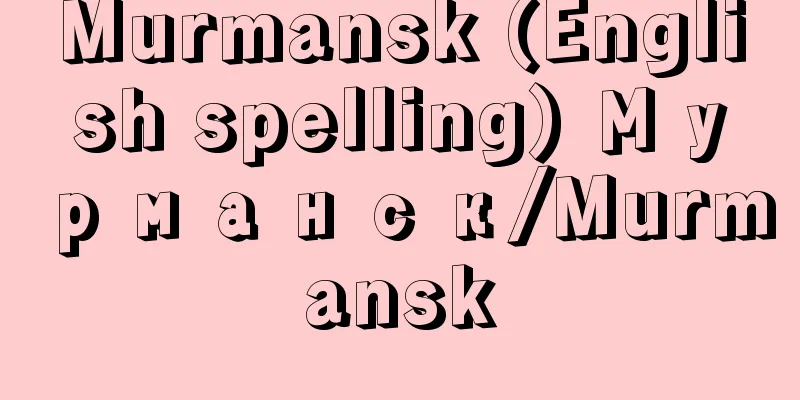Murmansk (English spelling) Мурманск/Murmansk

|
Murmansk is a large city in the northwest of Russia, in the northern part of the Kola Peninsula, and the capital of Murmansk Oblast. It has a population of 382,700 (1999). It is the largest city in the Arctic Circle, located at 69 degrees north latitude. It is located on the shores of a fjord 50 kilometers from the mouth of the bay in the northwest of the Kola Peninsula. It is a northern port city that requires heating 320 days a year and experiences continuous darkness in the winter, but it is an ice-free port because the Gulf Stream flows into the Barents Sea and the tidal range is four meters, resulting in large seawater movements. The town is built clinging to the slopes of the long, narrow fjord, stretching for nearly 10 kilometers. It is one of Russia's leading commercial, fishing and naval ports, and its industry is also developing. Its main industries are seafood processing, shipbuilding, ship repair, construction materials, furniture and sewing. There are also many educational and cultural facilities, including a polar research institute, a fisheries and marine research institute, a fisheries technology college, a teaching university, a maritime club, various theaters and museums. Since the 1990s, it has also developed into an international tourist destination, focusing on Arctic Ocean cruises. Airport location. [Taizo Nakamura and Toshio Omata] historyThe town was founded in 1915 in connection with the construction of an ice-free port on the eastern shore of Kola Bay and the construction of the Murmansk Railway, and officially became a city in October 1916. Until April 1917, it was called Romanov-na-Murmane. From March 1918 to February 1920, it was occupied by British, French and American intervention forces. In 1921, it became part of Murmansk Prefecture, and in 1938, the center of the region. During the Great Patriotic War (World War II), despite suffering from German bombings, it played an important role in supplying aid supplies from Britain and the United States, which were allies of the Soviet Union at the time. With the collapse of the Soviet Union in December 1991, it became a city in the Russian Federation. [Takeo Kuryuzawa] Source: Shogakukan Encyclopedia Nipponica About Encyclopedia Nipponica Information | Legend |
|
ロシア連邦北西部、コラ半島北部の大都市で、ムルマンスク州の州都。人口38万2700(1999)。北緯69度に位置する北極圏最大の都市。コラ半島北西部の湾口から50キロメートル奥のフィヨルド岸にある。年に320日も暖房しなければならず、冬季暗黒の日々が続く北の港湾都市であるが、メキシコ湾流がバレンツ海に流入しているのと、干満の差が4メートルもあって海水の動きが大きいため、不凍港である。 細長いフィヨルドの斜面にへばりつくように町並みがつくられ、市街地が10キロメートル近くも延びている。ロシア有数の商港・漁港・軍港であり、工業も発展している。主要工業は水産加工、造船、船舶修理、建設資材、家具、縫製である。また、極地研究所、水産・海洋研究所、水産技術高等専門学校、教育大学、海員クラブ、各種劇場、博物館など、教育・文化施設が多い。1990年代に入って、北極海クルージング(巡航)を中心とした国際的な観光地としても発展している。空港所在地。 [中村泰三・小俣利男] 歴史1915年コラ湾東岸における不凍港建設およびムルマンスク鉄道敷設との関連で町がつくられ、16年10月正式に都市となる。17年4月まではロマノフ・ナ・ムルマニェРоманов‐на‐Мурмане/Romanov-na-Murmaneとよばれた。18年3月~20年2月、イギリス・フランス・アメリカ干渉軍によって占領された。21年以降ムルマンスク県の、38年以降同州の中心地となった。大祖国戦争(第二次世界大戦)中、ドイツ軍の爆撃に苦しみながらも、当時ソ連の連合国であったイギリス、アメリカからの援助物資補給に重要な役割を果たした。1991年12月のソ連崩壊に伴い、ロシア連邦の一都市となる。 [栗生沢猛夫] 出典 小学館 日本大百科全書(ニッポニカ)日本大百科全書(ニッポニカ)について 情報 | 凡例 |
<<: Mururoa Atoll - Mururoa Atoll
>>: Murba Party - Partai Murba
Recommend
Vitreous opacity
…These are vitreous floaters (myodesopsia). What ...
Stiff shoulder
What is the disease? It is a disease accompanied ...
Kawamoto [town] - Kawamoto
A former town in Osato District, northern Saitama ...
Patriotic Labor Movement - Aikoku Roudou Undou
… In addition to this, after the Manchurian Incid...
The Structure of the American Economy 1919-1929
…The percentage of heavy chemical industry in the...
liṅga-śarīra (English spelling) lingasarira
...The elements that make up the system of this s...
nuclear Overhauser effect
...Furthermore, the integrated intensity of the m...
Row - Gyo
[1] 〘Noun〙① A Buddhist term. (i) (A translation of...
Peristrophe bivalvis (English spelling)
…[Hiroshi Terao]. … *Some of the terminology that...
Magnolia officinalis (English spelling)
…[Kunihiko Ueda]. … *Some of the terminology that...
Okatoyo - Oko
...In the broadest sense, the area includes the t...
Behçet, H. (English spelling) BehcetH
...This disease was reported in 1937 by Turkish d...
Gesner, J.
...The word comes from the Latin "seminarium...
Capillary action - Moukangensho
This phenomenon occurs when a thin tube is placed...
Takasu [town] - Takasu
A town in Kamikawa County, located in central Hokk...









